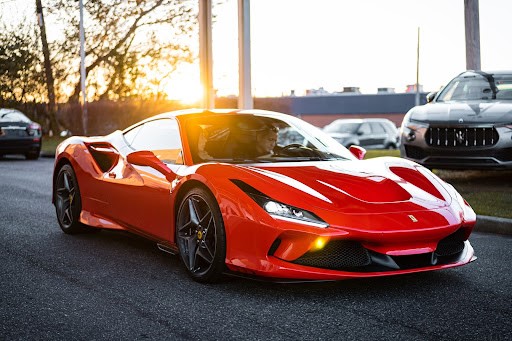
Exotic Car Photo by Brandon Atchison on Unsplash
Whether you’ve been in the market for a used car or keep a watchful eye on prices, it’s hard not to notice the changing conditions. Last year’s peak for most pre-owned vehicle valuations is over. At the end of March 2022, the average used car went for $33,486. However, that number is now $30,472 as of February 13, 2023, a 9.9% drop, according to CoPilot. That’s good news for the typical consumer seeking a new set of wheels.
Yet, not all parts of the second-hand car market are declining. They say the rich are different, and so are their used cars. For instance, retail pricing for pre-owned exotic cars and vehicles soared from an average of $129,700 in January 2021 to $183,000 by August 2022, a jaw-dropping 41% climb. Not even Bitcoin losing a third of its value during this time could dampen the enthusiasm for Rollers and Lambos.
And prices for these ultra-rides are still sky-high and only slightly off last summer’s record. A used exotic car for sale today has an average $178,800 asking price. The 2.3% decline won’t even pay for a Rolex. CoPilot’s original forecast calls for the typical exotic car to sell for about $109,000, but then COVID-19 and strange market forces intervened. Lockdown is better with a Ferrari (or two) in the garage.
Explaining The Resilience of Exotic Cars in a Declining Used Car Market
The drop in prices for “normal” used cars from last year’s extreme is attributable to two key factors. Mainly, automakers are churning out more cars, enabling some shoppers to skip the pre-owned arena. And rising interest rates translate into fewer buyers.
However, these issues matter little to buyers wanting a supercar or an opulent SUV. Scarcity is still a thing with exotic cars and vehicles. What Toyota produces in under a day, Ferrari, Lamborghini, Rolls Royce, and each of the other ultra-premium brands make in a year. So a few more examples of the Ferrari F8 Tributo leaving the factory in Maranello won’t impact what buyers pay for the same vehicle as a used car.
Likewise, borrowing costs matter little to someone paying six figures for a car that likely isn’t a daily driver. And if a buyer is financing a Lamborghini Murciélago, the extra $200 towards a monthly payment will be of zero consequence.
Plus, there’s another driver of demand for used exotics, impatience. Many top-tier automakers are at capacity. According to Luxurylaunches.com, factory orders for a new Lamborghini take an average of 19 months, compared to six to nine months before the pandemic. Ferrari is in no better shape with a similar lead time, and the company temporarily stopped new orders on its hot Purosangue SUV (which has a two-year backlog). For those deep-pocketed individuals having a need for speed and style and an unwillingness to wait, the only place to turn is the pre-owned market.
So, until these factors differ, there’s likely to be only minimal change in the prices for used exotic vehicles.
Some Used Exotic Cars Are Headed in the Same Direction
Just like exotic cars are the exception to what’s happening with overall used car prices, some super-premium rides aren’t following the segment trend. A review of CoPilot data uncovers a few exotics that have taken a dive in retail value since August’s heyday.
Leading the pack into infamy is the McLaren 765LT, a 765-horsepower beast that’s seen its fortunes fall significantly. In pre-owned form, the retail price for this supercar has dropped by an eye-watering $93,100 since the summer.
And it isn’t good for another storied British brand, Rolls Royce. The pre-owned price for its Cullinan SUV has cratered by $92,500 during the same time. Meanwhile, there are similarly steep pricing declines on other second-hand exotics that don’t come from the UK. The Lamborghini Murciélago is down by $75,000, and the Ferrari 812 GTS has dropped by $82,800, to name a few.










